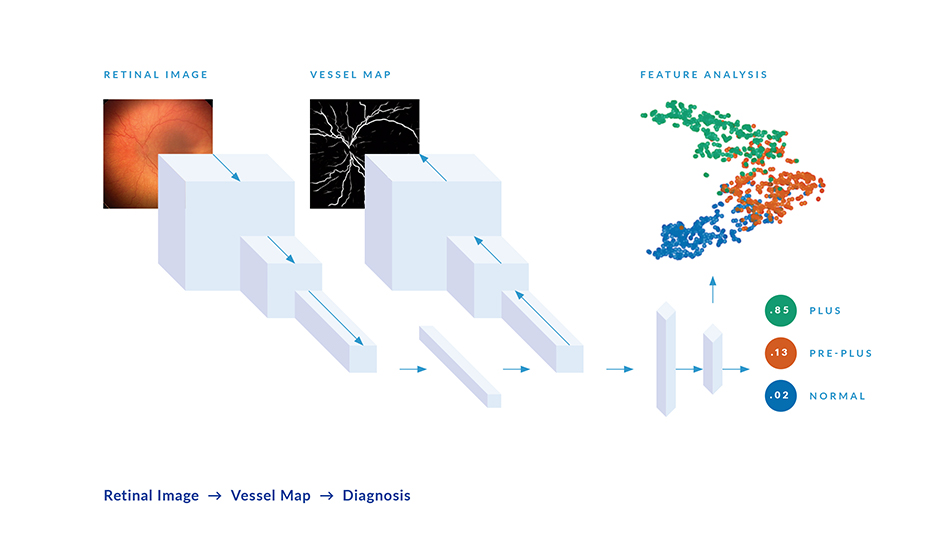
Leading in artificial intelligence applications
Following a decade of research into how to deliver consistent, accurate diagnoses for retinopathy of prematurity (ROP), OHSU Casey Eye Institute is another step closer to bringing an artificial intelligence (AI)-based algorithm system to patients. In collaboration with Massachusetts General Hospital, Northeastern University and University of Illinois-Chicago, OHSU Casey Eye Institute recently received a “Breakthrough Device” designation for an AI system called i-ROP DL (deep learning) as an assisted medical device for diagnosing clinically-significant ROP.
High stakes for ROP diagnosis
“Our motivation is that ROP is the leading cause of preventable childhood blindness in the U.S. and world,” said OHSU Casey Eye Institute ophthalmologist Michael F. Chiang, M.D., principal investigator of the i-ROP study. “ROP presents challenges for ophthalmologists because it relies on subjective diagnoses and presents logistical hurdles. Also, there is a huge imbalance in the number of premature infants needing evaluation and the number of available experts. A missed or misdiagnosed infant will go blind, so the stakes are high.”
In comparison trials, even experts are not very consistent in making ROP diagnosis. In one example, some international experts diagnosed severe treatment-requiring ROP 6 times more frequently than other experts, even when examining the same eyes. Finding ways to standardize a quantitative assessment has been a passion for Chiang. He is the current Chair of the International Classification of ROP Committee, which is developing worldwide standards for ROP diagnosis.
Ophthalmology lends itself to AI
“Because ophthalmology is heavily image based, it is a good field to analyze and quantify data using AI and computing systems,” Chiang said. “Through deep learning, the algorithm uses the collective knowledge of ophthalmologists and creates a mathematical model that accurately diagnoses ROP from images. The AI system we are working on had comparable or better results than our panel of experts in accurately identifying ROP.” Chiang believes that many of the challenges in ROP are true across ophthalmology and medicine in general. “Though OHSU Casey Eye Institute is leading to get this one product to the FDA, we are also applying machine learning and AI to create more precise, quantitative scales for other eye diseases,” he said.